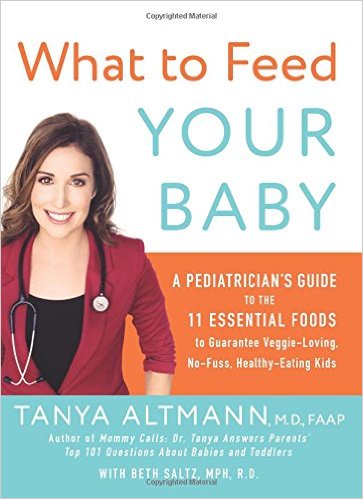The following is adapted from Dr. Tanya Altmann's "What to Feed Your Baby: A pediatrician's guide for raising a veggie-loving, healthy-eating baby," released tomorrow and published by HarperOne.
Your pediatrician was wrong when she said to hold off on giving your baby peanut butter until age 1 (or even older). It's not her fault—I was once wrong too—as those were the recommendations until a few years ago. We now know that holding off on peanut products and other allergenic foods, such as fish and eggs, will not decrease the chance that your child will develop a food allergy. In fact, a recent landmark study actually showed that giving peanut products early to high-risk infants (those with eczema and other signs of allergic disease) decreased the chance that they would later develop a peanut allergy.
The bottom line: introducing nuts early does not put your child at risk of becoming allergic. So I recommend parents introduce this important food early on.
RELATED: Why Do So Many Kids Have Food Allergies Now?

Nuts and nut butters are delicious, healthy and convenient. Nutrient-wise, they offer vegetarian protein, vitamin E and healthy monounsaturated fats. Nuts and nut butters are an easy way to add healthy protein to any meal, even breakfast.
It's important to note that whole nuts are a serious choking hazard and should not be given to children under age 3. So how do you introduce peanuts to a baby? Around 6 months, I melted 1 teaspoon of creamy peanut butter into 1 ounce of oatmeal and fed it to my third son for breakfast three times a week. At 9 months, I gave him a little creamy nut butter by itself (to lick off my finger) and then on whole grain bread. He also loves Bamba (a peanut puff snack from Israel).
Peanut butter and almond butter are favorites for young kids, but not all nut butters are created equally. I recommend buying natural nut butters with no sugar added. The main ingredient should be nuts. You can now find no-stir varieties of natural peanut butter.
Here's a quiz:
BRAND A—Natural creamy peanut butter. Contains: dry roasted peanuts with or without salt
BRAND B—Regular creamy peanut butter. Contains: roasted peanuts, sugar, hydrogenated vegetable oils, salt
Which is the better choice? Brand A because there's no added sugar or oil. There is no need to buy low-fat peanut butter, because the fat in nut butter is a healthy, good-for-you fat.
Eventually your preschooler will be better able to handle chewing crunchy nut butters and small pieces of raw nuts—a great snack or portable protein to carry with you anywhere. I always have stashes of nuts in my bag for me or my older kids.
RELATED: 10 Things Not to Say to an Allergy Mom
So go ahead and feed your baby yummy peanut butter. It won't put him at risk of becoming allergic and it offers important nutrients.
And what kid doesn't grow up to love PB&J sandwiches? It's a win-win.
Pediatrician and consultant Dr. Tanya Altmann is the author of four books on raising kids. Leave your food challenges and questions for Dr. Altmann in the comments or on the Mom.me Facebook page.




